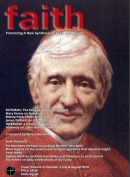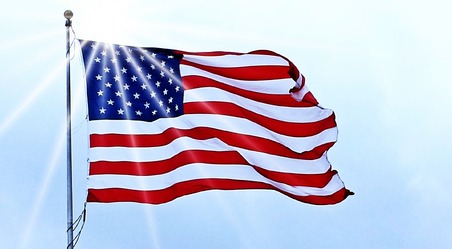Techies in the Pews
| Guy Consolmagno SJ FAITH Magazine July-August 2008 | |
Three years ago, I took time out from my own work as an astronomer at the Vatican Observatory to do a Jesuit program called Tertianship. It’s a sort of sabbatical we Jesuits take after a dozen years or so in the Society of Jesus to recharge our spiritual batteries, as a prelude to taking final vows. One part of that experience is to spend time someplace different from our normal workplace, doing a different kind of Jesuit work than what we’d become used to. My assignment was to go to the Jesuit school in California’s Silicon Valley, Santa Clara University. Instead of doing science, I would be talking to professional scientists and engineers - techies- about their faith lives.
It was a fascinating experience. For six weeks I spoke to scientists at the NASA Ames Research Center and at Stanford University; engineers at Hewlett-Packard and Apple Computer; self-employed researchers; consultants at small high-tech startups. They were Catholics and Orthodox, Protestants and Jews, agnostics and atheists. But they were all techies. They were all willing to talk to me because, like them, I am a techie, too - not only a Jesuit brother, but an astronomer with advanced degrees from MIT and the University of Arizona.
We covered a wide variety of topics, and I heard an equally wide range of opinions. Some of my techies were devout churchgoers; others were scornful of organised religion. But all of them knew what I was talking about when I asked my questions; there was nothing I raised that they hadn’t already thought about themselves.
But their techie mindset means that they experience religion in unusual ways. That became the topic of God’s Mechanics, published by Jossey-Bass last October. I took many of those observations and wrapped them in reflections of my own, writing a book that explores how my friends understand religion, and how I as a techie make sense of my own Catholic faith.
For example, many of the techies I spoke with told me that they are baffled by liturgical practices they see in their parishes. The language of spiritual affectivity they often hear from the pulpit sounds like meaningless mumbo-jumbo to a person more used to reading a technical manual or, worse, more used to figuring things out on their own. One techie described the homilies at his church as mere “white noise;” another commented to me, “why should I listen to some guy in a dress up on the altar who doesn’t even know how to make the microphone work?” To them, church leaders and ministers rank at about the same low level of esteem as the “suits” where they work, the management types who are clueless about what actually goes on in the lab.
One conversation in particular that I recount in that book epitomises in many ways the reactions I got in these interviews. It illustrates many of the “techie” approaches that I heard, applied to a particular religious issue that bothers many of my science and engineering friends.
We’re used to searching for truth in the physical universe, and we use a common set of tools to help us understand that truth: the laws of nature, which we assume are basically constant and unchanging. Indeed, we are taught the same maths and physics, often from the same textbooks, whether we’re studying in Manchester or Mumbai. There’s really only one kind of physics that everyone agrees on. So, if religion also claims to teach us the truth, why are there so many different kinds of religion?
I brought this issue up with many of my techie friends, and heard a variety of answers. Then, one of those techies and I worked out a sort of summary of the approaches we’d heard...
Jules is a Caltech graduate who now makes his living as a professional photographer; he combines an artistic talent with his scientific abilities in the darkroom to produce some astonishingly beautiful images of nature that now adorn his living room. We’re also surrounded by a thousand vinyl record albums, dozens of paintings, and a couple of original signed cartoons. Seeing him sitting there, dressed in a wide Hawaiian shirt with a peace symbol on a cord peeking out from behind his unkempt beard, I am almost transported back in time . . . except the beard is gray now, and the shirt a bit wider than it would have been thirty-five years ago.
Like me, Jules sees himself as a “techie-plus,”someone who’s part of that community yet still able to step out of it and look it over from the outside.
Jules suggests to me that as many as eighty per cent of techies are religious, but that this number is highly uncertain because the subject matter is taboo among most modern scientists; it’s not something we talk about in our daily working lives. The experience of most techies is that discussion about religion is acrimonious and pointless, he says. It’s my clerical collar (worn or not) that gives them permission to talk to me, even if it also colours what they are willing to tell me.
When I describe to him my idea that the typical techie is an engineer looking for the rules of the universe, he raises his eyebrows. “Engineers are strong on content but weak on process,” he reminds me. “They don’t see that the process of how one arrives at a solution can be as important as the solution itself.”
I describe how David, an astronomer, had worried that there were too many religions: “They can’t all be right; so they must all be wrong.” Jules laughs and asks, “Why can’t they all be right?” But then, in true techie fashion, he and I start to outline and enumerate the different ways that we see techies approach the “many religions” question:
1. They can’t all be true, so they must all be false. (David’s answer.)
2. They are all true, just different descriptions of the same truth. All churches must be equally true, because they all essentially teach the same thing. This is especially obvious if you view religion as essentially a source of ethical rules for human behaviour rather than theological truths about God and make the techie assumption that content equals rules; then, if all your churches come up with the same rules, they must all be based on the same content, and thus they must ultimately all be the same. (I think I saw this in George, a computer engineer raised Catholic but now a member of his wife’s church, the Seventh-day Adventists.)
3. Different religions are like different computer operating systems adapted to different computer platforms; which one is right for you depends on how you are “wired.” In other words, the choice of which religion you should follow depends on your personal history, your internal needs, your genetics, or the general question of what you’re trying to get out of that religion. This is not quite the same as answer number 2, because it suggests that for a given person, one religion might be better than the others; but for different people with different histories and different needs, different religions might be more appropriate. And like computer systems, some religions have more features than others, but at the cost of a higheroverhead and the greater possibility of bugs. Again, the unspoken assumption is that what is important in the differences between religions has nothing to do with how close their theological descriptions of God correspond to reality, either because those differences don’t exist or because they are impossible for us to judge, differences too subtle to be detected by us, lost in the “noise” of our human limitations, personal history, genetics, and so on. (This sounds like Alan and Beth, an applied mathematician and a medical doctor, who were “shopping” for a church in which to raise their children.)
4. Different religions are different approximations to the truth, but some approximations converge on the truth faster than others (as described to me by Ian, an Orthodox engineer). This is different from numbers 2 and 3 because it suggests that there is one religion, the one that converges the fastest, that really is “better” than the others, at least in a functional sense, if not necessarily “truer” in the long run.
5. Different religions are like different levels of physics. We know that Aristotelian physics, though a perfect example of “common sense,” is actually less accurate (and much less useful or powerful) than Newtonian physics. But likewise, at a certain point, Newtonian physics fails, and we can see that it is less accurate than quantum physics. Only the last comes closest to the truth. For many people, and for much of the time, the less true versions of religion (which may be easier to grasp) can be adequate, just as most human beings happily live in the commonsense world of Aristotle without even realising it, and most engineers can do most of their work using merely Newtonian physics. But at the end of the day, and especially evident in the hardestand most extreme cases, those other versions of physics will fail to give an accurate description of the truth.
Note that of the five, this last model is ultimately the only one that suggests that one religion really does more closely match the truth than any of the others. We can argue about which one!
Adapted from God’s Mechanics, pp 108-110, c 2008 Jossey-Bass
A fellow techie reading this chapter pointed out something I missed at the time. These five different answers in many ways reflect the differences among the techie types themselves. The first and last answers come from scientists: we expect to find one, and only one, valid theory of nature. There’s only one truth, and anything different from that truth is… well… not true. But the the second and fourth answers come from engineers. They are interested in solving practical problems, and they’re used to having more than one way to solve a problem. Which solution you use often just depends on the tools at hand. This is also evident in the third answer, which came from a medical doctor and her husband. Elsewhere in my conversation with them, they’d told me they couldn’t judge which religion was“right”; they would just be happy if it weren’t “obviously wrong”. I can see there the doctor faced with a variety of possible treatments for a given ailment; she must choose among them the drug that best suits her patient.
As others have noted, missing in all this conversation is any sense of a personal connection with God, a one-on-one relationship with Jesus. Alas, this reflects how difficult many techies find making such personal relationships work in their own lives. That’s who we are.
And that’s perhaps why we need to be especially patient and understanding with those techies among us. They struggle to encounter God the only way they can: through their often overdominating intellects.
Guy Consolmagno is Researcher and Curator at the Vatican Observatory
This piece is a development upon an article on the Jesuit “Thinking Faith” website.





